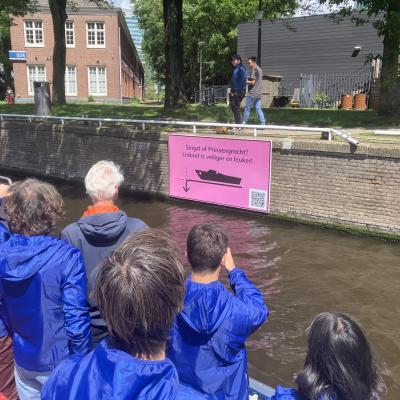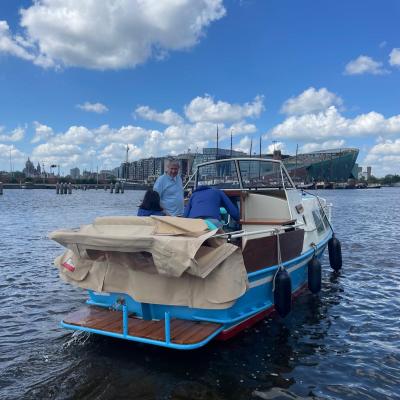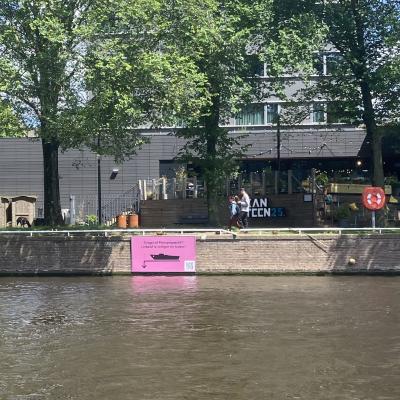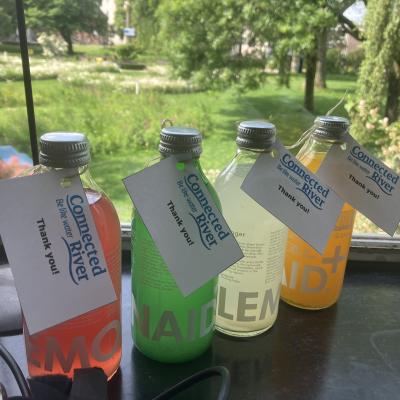The Amsterdam river IJ is a busy waterway, attracting diverse users, from pleasure boats to commercial barges. However, the increasing shared use of the river can pose safety and accessibility issues if not managed effectively by authorities and users. Collaborative measures are needed to maximise societal value and ensure safe and responsible use.
Today's Partner: Rijkswaterstaat

Jelmer de Lange
Coordinator Shipping innovations
Rijkswaterstaat
Role within the Project
Leader for Work Package #2 "Conducting user-centric and agile innovation on challenges that shared waterways & Waterfronts face"
What is your objective within Connected River?
The IJ is a busy waterway connecting the port of Amsterdam with Belgium and Germany, yearly about 100,000 barges are passing. It is also at the heart of the city. Many passenger ferries cross the IJ day and night, and during summer days inhabitants and tourists go out on the water with small boats.
Our objective is to explore new ways to make the IJ save and attractive to all these different stakeholders. One of our experiments involves the psychological concept of nudging. By installing pink signs at entrances to the IJ we try to nudge people to choose safer alternative routes via the inner city.
What kind of experiments have been carried out so far?
- We developed a prototype navigation app that could be helpful for events such as SAIL 2025
- Together with students we created a serious game that introduces the rules and risky events at the IJ
- We did a co-creation program with Waag Futurelab involving recreational skippers in developing new communication concepts on the water
How did you involve end-users and what was their response?
Once the signs were installed, we went out on the water several times and asked recreational users if we could sail along so we could see how they navigate and interview them. The response of recreational users was in general very cooperative.
What were the results (output & outcome)?
We have collected interviews to reflect on and get to know more of why they behave the way they do. We learned that our presence on board was a huge distraction, causing skippers to not notice the sign at all. So we changed our tactics and made sure we interviewed them after they passed the sign.
What are the lessons learned?
Although the sign only has a few basic words and image, largely all skippers understood the message and were also positive about our intentions. We also learned that the location of the sign was not optimal. The lesson we will take from this experiment is mainly whether you can nudge users with eccentric signs, whether they read signs and/or whether this low-effort solution is a solution to crowding on the IJ.
Source: Rijkswaterstaat




